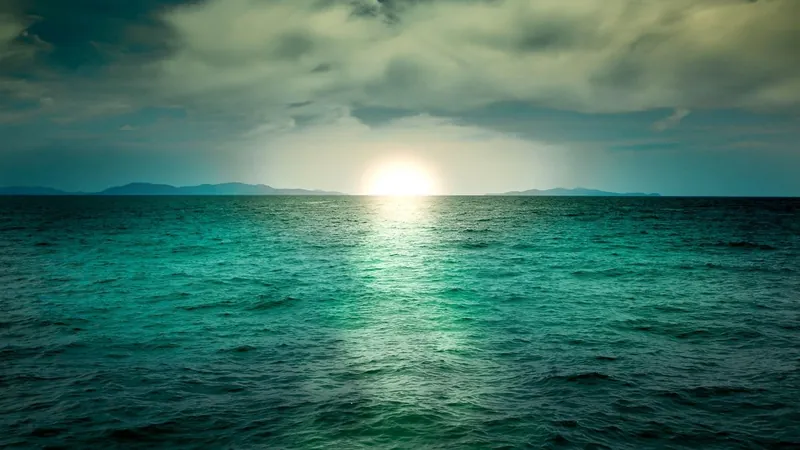
The Fascinating History of Earth's Changing Oceans: From Green to Potential Purple
2025-04-13
Author: Wei Ling
Oceans: A Colorful History
Did you know that Earth's oceans may have once glimmered in shades of green? This intriguing possibility is highlighted by Japanese researchers in a groundbreaking study published in *Nature*. While today our oceans appear as a serene blue, ancient seas could paint a very different picture.
The Early Earth: A Colorful Past
Back in the Archean eon, roughly 3.8 to 1.8 billion years ago, the world was vastly different, teeming with microscopic life in a landscape barren of color. The continents were a dull mix of grey and brown rocks, and our oceans were not the clear blue we know today.
The key to this transformation lies in the chemistry of the oceans and the evolution of photosynthesis. During the early Earth, rain would dissolve iron from rocks, which rivers then carried to the seas. This iron, primarily from volcanic activity, plays a crucial role in the story of our oceans.
Photosynthesis: A Game Changer
The Archean eon was also the dawn of photosynthetic life, where early bacteria harnessed sunlight without the presence of oxygen, utilizing a form of photosynthesis that produced oxygen as a byproduct. This released oxygen would eventually transform the atmosphere and the oceans, marking a pivotal shift known as the "Great Oxidation Event." This transform was crucial for the evolution of complex life.
Evidence of Green Oceans
Building their case for green oceans, researchers noted that the waters around Japan's Iwo Jima island exhibit a greenish tint related to oxidized iron—Fe(III). Here, blue-green algae, ancient predecessors to modern algae, thrive. Intriguingly, these organisms evolved to utilize ferrous iron for photosynthesis during a time of high iron concentration in the oceans.
Modern studies revealed that genetically modified blue-green algae performed better in green waters, suggesting that ancient oceans might have had hues driven by high iron levels, with chlorophyll and an additional pigment known as phycoerythrobilin helping them thrive.
A Future of Changing Colors?
Could our oceans change hues once again? The answer might lie in shifts in water chemistry due to volcanic activity or even changes in pollution levels. Experts suggest that a rise in sulphur could turn our oceans purple, dominated by sulfur bacteria under low oxygen conditions. Red oceans might emerge from intense tropical climates or algal blooms fueled by fertilizers.
As our sun ages and its brightness increases, it could lead to more diverse and vivid ocean colors, marking yet another chapter in Earth's dynamic history. From green to potentially purple and red, the journey of our oceans is a testament to the ever-evolving nature of life on our planet.

 Brasil (PT)
Brasil (PT)
 Canada (EN)
Canada (EN)
 Chile (ES)
Chile (ES)
 Česko (CS)
Česko (CS)
 대한민국 (KO)
대한민국 (KO)
 España (ES)
España (ES)
 France (FR)
France (FR)
 Hong Kong (EN)
Hong Kong (EN)
 Italia (IT)
Italia (IT)
 日本 (JA)
日本 (JA)
 Magyarország (HU)
Magyarország (HU)
 Norge (NO)
Norge (NO)
 Polska (PL)
Polska (PL)
 Schweiz (DE)
Schweiz (DE)
 Singapore (EN)
Singapore (EN)
 Sverige (SV)
Sverige (SV)
 Suomi (FI)
Suomi (FI)
 Türkiye (TR)
Türkiye (TR)
 الإمارات العربية المتحدة (AR)
الإمارات العربية المتحدة (AR)